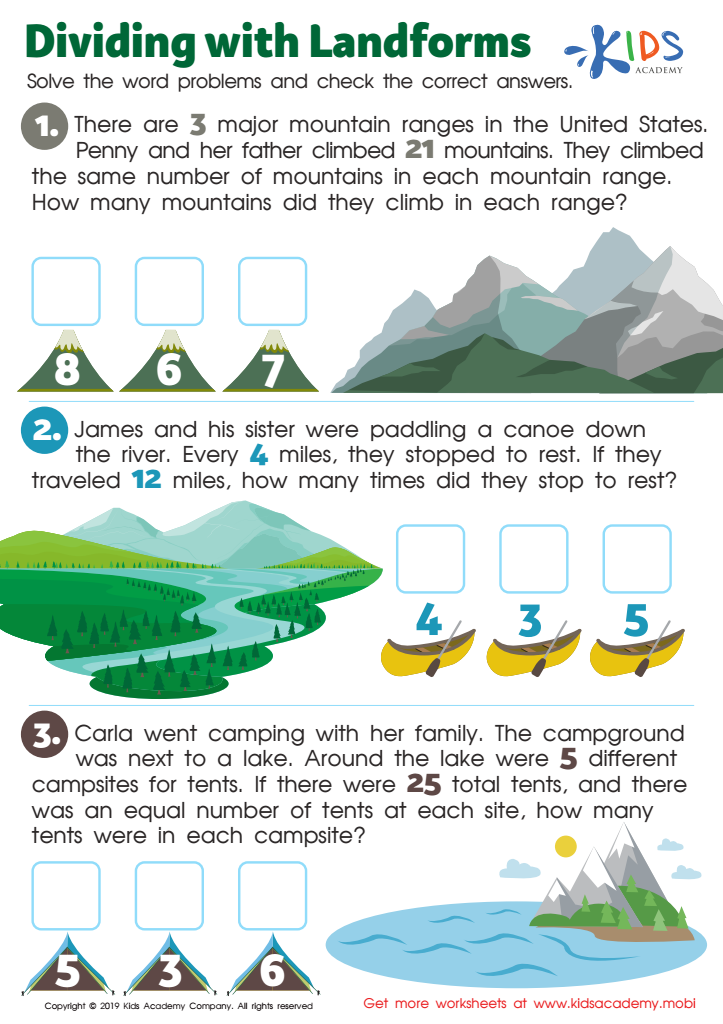Understanding landforms Normal Worksheets for Ages 6-8
3 filtered results
-
From - To
Explore the fascinating world of landforms with our Understanding Landforms Normal Worksheets for Ages 6-8! Designed to captivate young learners, these engaging worksheets cover essential geographic concepts, from mountains and valleys to rivers and islands. Each activity encourages critical thinking, creativity, and hands-on learning, helping children recognize and describe different landforms that shape our Earth. Perfect for both classroom and home use, these worksheets support skill development in reading, writing, and science. Equip your child with a deeper understanding of our planet's stunning features and watch their curiosity soar!


Landforms: Pirate Maze Printable


Maps and Landforms Worksheet


Dividing with Landforms
Understanding landforms is an essential part of early education for children aged 6-8. Knowledge of landforms such as mountains, hills, valleys, plains, rivers, and islands helps foster a sense of curiosity and appreciation for the natural world. This understanding lays the groundwork for geography and earth science education, which can ignite lifelong interests in these fields.
For parents, discussing and exploring landforms with their children can enhance family learning and provide engaging, hands-on experiences like visits to parks or nature reserves. Teachers can utilize landforms to teach critical thinking skills and vocabulary. Moreover, this topic integrates easily with other subjects, including reading and art, thus providing a comprehensive educational approach.
Grasping landforms early helps children perceive global environmental issues, aiding them in developing respect and responsibility for our planet. Additionally, children learn to recognize the relationship between humans and their environments, such as understanding why certain regions are better for farming or how mountains can affect weather patterns.
Furthermore, studying landforms cultivates spatial thinking and maps skills. When children visualize where they live in relation to the rest of the world, they develop a broader perspective, which is crucial for their intellectual and empathetic growth. Therefore, parents and teachers should prioritize introducing and educating young children about landforms for these multifaceted benefits.
 Assign to My Students
Assign to My Students




















